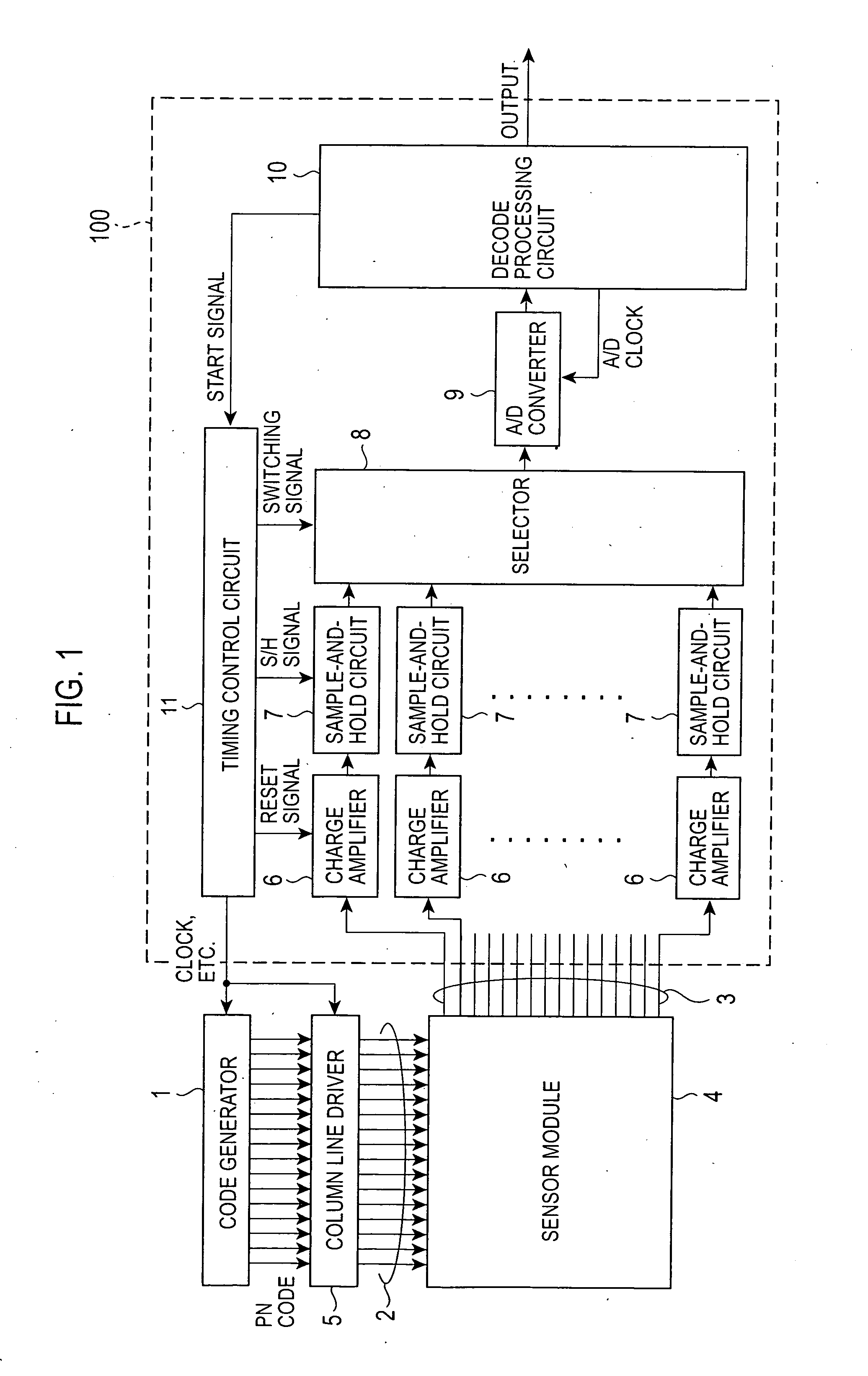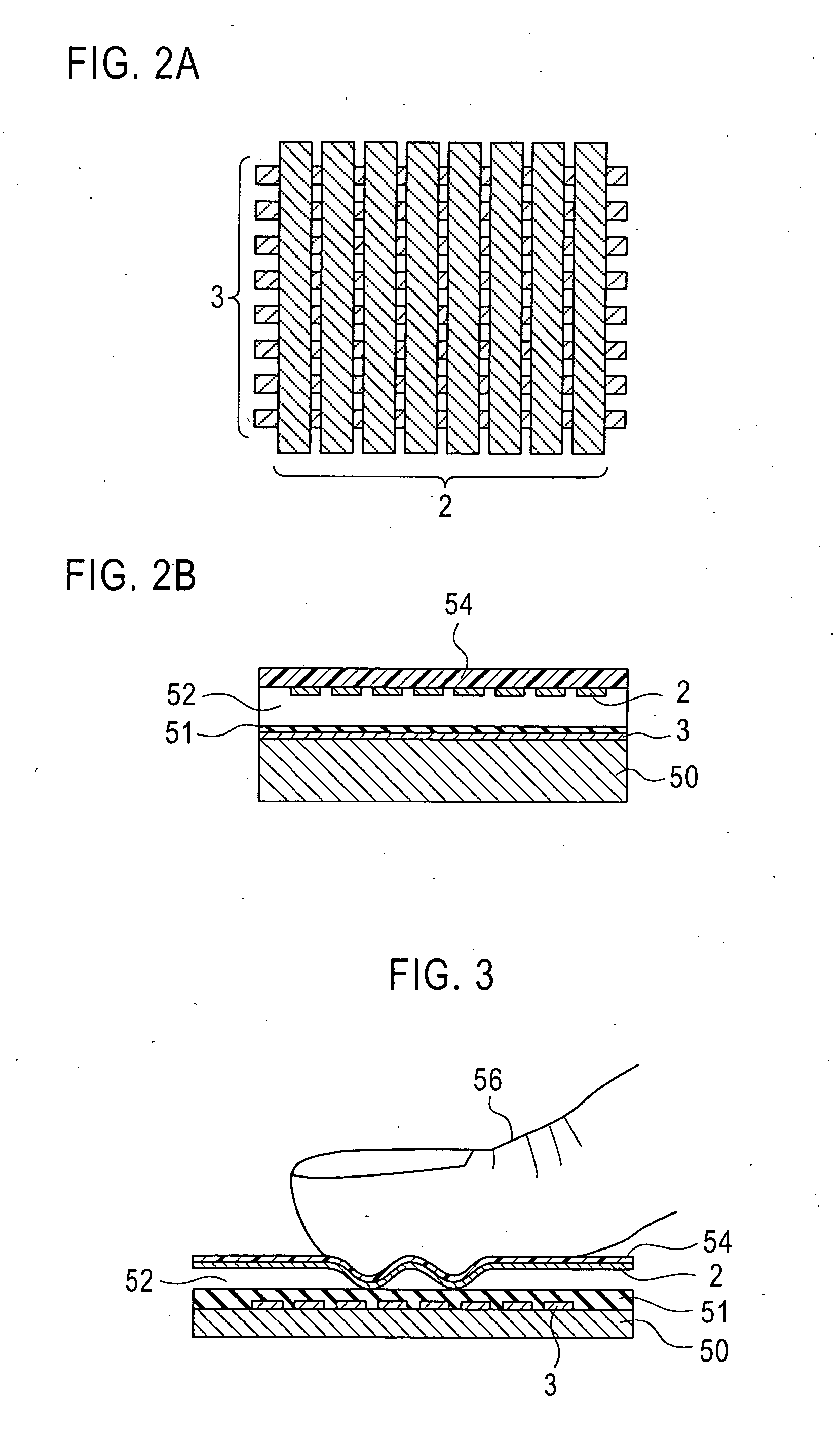Capacitance detector circuit, capacitance detection method, and fingerprint sensor using the same
a capacitance detection and capacitance detection technology, applied in the direction of acquiring/reconfiguring fingerprints/palmprints, resistance/reactance/impedence, instruments, etc., can solve the problem that the capacitance detector circuit is unable to precisely detect a capacitance change, the capacitance detector circuit is unable to completely remove disturbing noise components, and the effect of disturbance noise added to the column lines is relatively reduced and the gain of detection is heightened
- Summary
- Abstract
- Description
- Claims
- Application Information
AI Technical Summary
Benefits of technology
Problems solved by technology
Method used
Image
Examples
first preferred embodiment
A capacitance detector circuit of preferred embodiments of the present invention is for use in a matrix capacitive sensor having a plurality of column lines and a row line intersecting the column lines and detects a change in capacitance at an intersection of a column line and a row line. The capacitance detector circuit includes a code generating unit for generating a code having orthogonality in time sequence to output the generated code as a column drive signal, a column line drive unit for concurrently driving a predetermined column lines which are selected in response to the code, a capacitance detecting unit, connected to the row line, for detecting a voltage by converting a total sum of changes in capacitance at intersections of the selected column lines into the voltage to output the detected voltage, and a decode processing unit for performing a predetermined calculation on a data string of the detected voltage output in time sequence on a per row line basis every cycle of...
second preferred embodiment
A second preferred embodiment of the present invention is described below with reference to FIG. 1. The discussion of the elements and operation identical to those of the first preferred embodiment is omitted here. In the capacitance detector circuit of the second preferred embodiment, the PN code generator 1 circulates the generated PN code for a plurality of cycles, and the column line driver 5 outputs the drive pulse train for the plurality of cycles to the column line array 2 to acquire measurement data for the plurality of cycles. In response to the PN code, the decode processing circuit 10 performs the multiplication and summing process on the acquired measurement data, thereby obtaining voltage data corresponding to the capacitance of each sensor element.
Referring to FIG. 14A, a spread gain is obtained. More specifically, in spread spectrum communication, spread gain GP is determined if transmission bandwidth BT is large with respect to bandwidth Bi of information as in th...
third preferred embodiment
Referring to FIG. 17, a capacitance detector circuit of a third preferred embodiment of the present invention is described below. FIG. 17 is a block diagram illustrating the structure of a code generator 1B and a column line driver 5 in accordance with the third preferred embodiment of the present invention. Elements in the third preferred embodiment identical to those discussed with reference to the second preferred embodiment are designated with the same reference numerals.
As in the second preferred embodiment, a measurement operation of shifting the bit train of the PN code and multiplexing the capacitance of the sensor elements on a per row line basis is performed for a plurality of cycles. The difference of the third preferred embodiment from the second preferred embodiment is that the multiplexing operation is performed using a different PN code for each cycle. More specifically, two types of PN codes are generated, and each time one cycle is completed, the detector switche...
PUM
 Login to View More
Login to View More Abstract
Description
Claims
Application Information
 Login to View More
Login to View More - R&D
- Intellectual Property
- Life Sciences
- Materials
- Tech Scout
- Unparalleled Data Quality
- Higher Quality Content
- 60% Fewer Hallucinations
Browse by: Latest US Patents, China's latest patents, Technical Efficacy Thesaurus, Application Domain, Technology Topic, Popular Technical Reports.
© 2025 PatSnap. All rights reserved.Legal|Privacy policy|Modern Slavery Act Transparency Statement|Sitemap|About US| Contact US: help@patsnap.com



